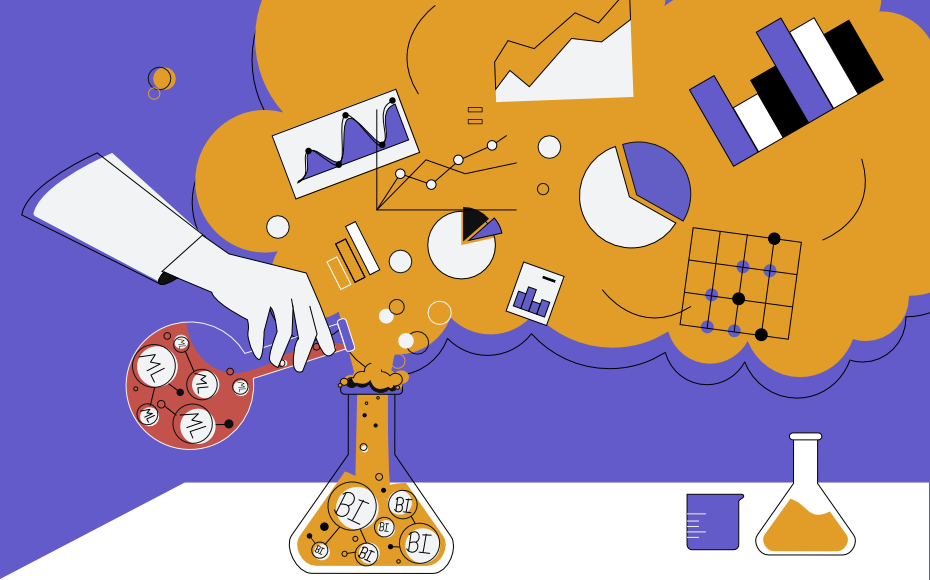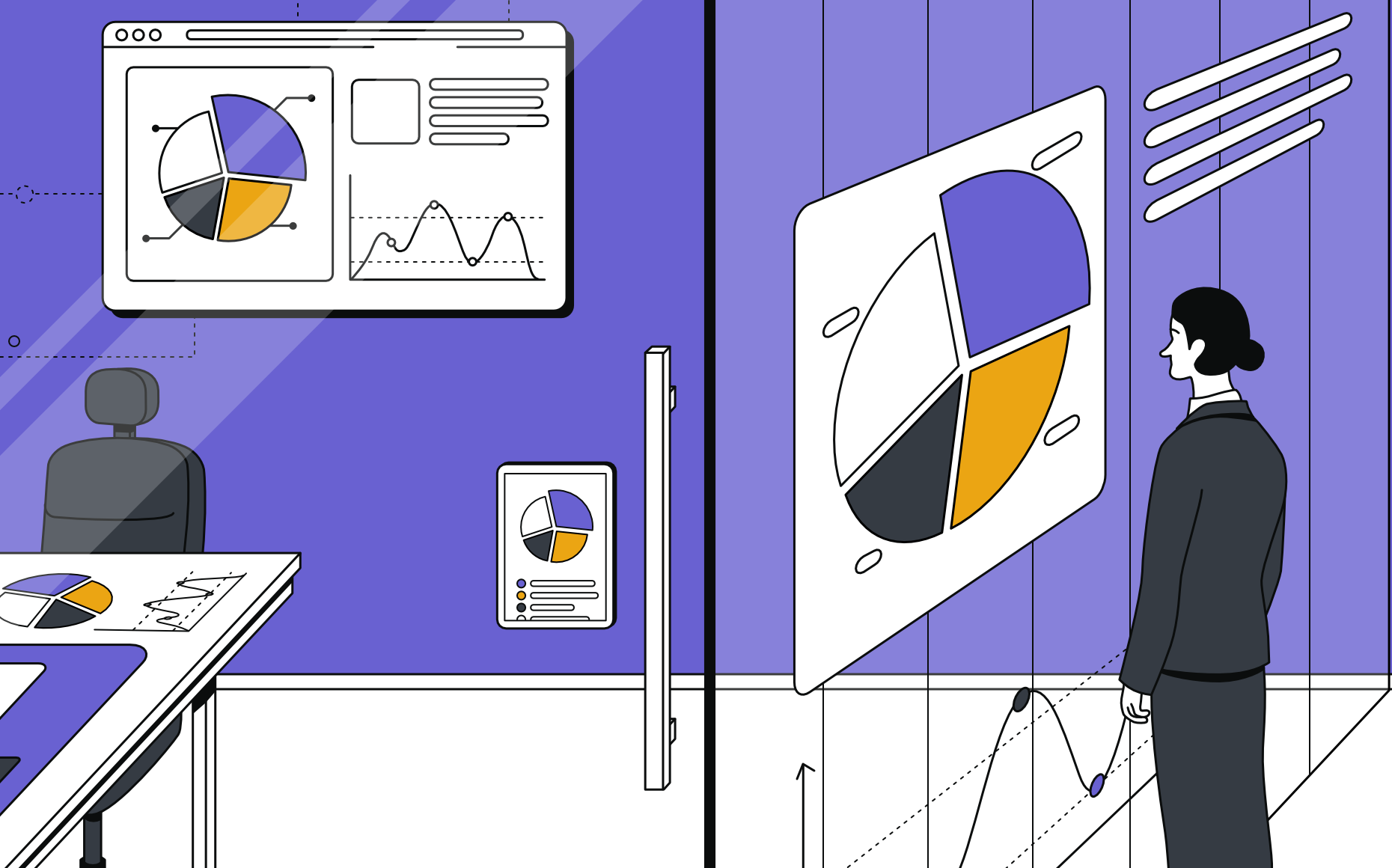If tech industry analyst firm Gartner is to be believed, machine learning has just passed the peak of inflated expectations and is currently dwelling in the trough of disillusionment. This is make-or-break time, as “Interest wanes as experiments and implementations fail to deliver…” and “…investments continue only if the surviving providers improve their products to the satisfaction of early adopters.”
And while it may be some time before Gartner sees ML begin the long climb up its slope of enlightenment, in my view, ML is on a fast track to the plateau of productivity.
ML is nothing less than the future of BI. And BI is nothing less than the future of many businesses. A bold claim? Let’s look at the facts:
-
Data is Big…Really BIG
In 1996, digital data storage became more cost-effective than storing information on paper. The drive to digitization (who remembers the paperless office?) began. Spurred on by innovations like Hadoop and cloud computing, commoditization of faster processors, and IoT, data became the “new oil.” This year, the world will produce and consume 94 zettabytes of data. To put that in context, a zettabyte is enough storage for 30 billion 4K movies, 60 billion video games, or 7.5 trillion MP3 songs, according to Seagate.
-
We’re Only At the Dawn of Complexity
It’s ironic that technologies designed to make our lives easier (and employees more productive) are, instead, making data management exponentially more complicated. And it’s not slowing down. We have an increasingly dispersed workforce, rely on a complex global supply chain, and each business manages a whopping 400 to 1,000 data sources.
-
The Digital Transformation Will Not Be Televised
COVID has undeniably accelerated companies’ digital transformation efforts. They’re racing to change business models to get ahead of a new market reality - one driven by changes in customer behavior. The solution is business intelligence tools that can deliver real-time insights to every employee. Navigating data and making informed decisions will soon be in every job description.
OK, if you follow this logic, we have more data than ever before, from more places, and it’s become more critical. And the kicker? Human beings make 35,000 decisions every day. Not all of these relate to complex business topics - for example, we make 226.7 decisions each day on food. Regardless, decision-making is an energy-consuming process, requiring conscious attention and mental energy. It’s exhausting to compare the options in front of us, try to predict outcomes, and determine the positives and negatives. One thing has become clear - too many decisions combined with too much information depletes cognitive resources.
Business Intelligence to the Rescue?
Geffrey Moore once said that “…without big data, you are blind and deaf and in the middle of a freeway.” So, unless someone pushes the big, red, Internet “off” button, we need to do something about this data feast and analytical famine.
And it’s not a new problem. The first recorded reference to “business intelligence” was way back in 1865. It was used to describe how banker Sir Henry Furnese collected and analyzed information and empirical evidence to make business decisions (instead of gut instinct or superstition!). Furnese was making strategic decisions based on data. And in the intervening 157 years, we’ve continued to refine our approach. Since the 1970s, early BI platforms from JD Edwards, SAP, and Siebel have helped us access and organize data.
ERP tools through the 1990s and 2000s became simpler to use, but BI was still the domain of cellar-dwelling specialists. And this has been the case until the latest crop of what are called “BI 3.0 tools” that make BI part of most medium or large companies’ application stacks. They use interactive visual interfaces to make data easy to understand, and inform a company’s strategies, functions, and overall efficiency. And they’ve been great. Until now.
Traditional BI platforms just can’t cope with the demands of the modern enterprise. The tools don’t always align with the way most businesses are structured. They were originally designed for data scientists and analysts - which made sense given these folks were historically best-equipped to interpret data and manage complex software applications. But now, we expect salespeople, financial analysts, and marketers to be making data-enabled decisions. Even with a push to self-service BI, the complexity of many tools means data scientists are wasting time building (and rebuilding) routine reports to answer basic marketing queries. This inefficiency creates delays in answering questions, leads to churn in the data team, and means companies will struggle to use data to reach their true potential.
Welcome to the Machine (Learning)
Machine learning (ML) is a sub-division of artificial intelligence (AI) and computer science. It uses algorithms to discern patterns in some given data and produce mathematical models.These models enable software systems to progressively improve their performance and accuracy. Models built from sample training data are analogous to software produced without explicit programming. The iterative process makes systems “smarter”, which makes it easier for them to find insights, understand historical relationships and identify trends and new opportunities.
Modern ML is the missing link between the challenges of big data and the ability for BI tools to help companies use data to reach their potential. Armed with ML, BI platforms can perform important analyses and adapt to different data sets. From predicting changes in stock prices to understanding which customers are more likely to buy to optimizing complex supply chains, predictive models can adapt, all with no or minimal human intervention. The longer they operate, the more accurate the results BI/ML tools will produce.
And we’re only just getting started. As ML and BI solutions evolve, we’ll see predictive analytics being applied throughout the enterprise. The descriptive analytics and basic graphs and charts that define the current state of BI will evolve into a world where employees across a business are increasingly relying on predictive analytics for decision-support, every day. Autonomous decision-making - where the system automatically analyzes input, decides the appropriate course of action, and implements it - will also become increasingly common.
BI and ML will fundamentally change the way businesses operate. Historical barriers to BI success such as laborious and frustrating data cleansing and preparation will be autonomously managed by the platform, speeding up the time to analysis and freeing up both data analysts, and end-users. Natural language processing (NLP), supported by ML models, will learn from users, predict queries, and customize responses. This will make the much-hyped data democratization a reality.
We’re not talking about a five or ten-year vision. Considering the accelerated spend on digital transformation initiatives over the past few years, there will be increasing pressure to demonstrate a return on this considerable investment. BI and ML platforms will be central to validating this spend - and ongoing business success.
If you want to talk more about digital transformation, machine learning, and the future of BI, tweet us @bippanalytics.







